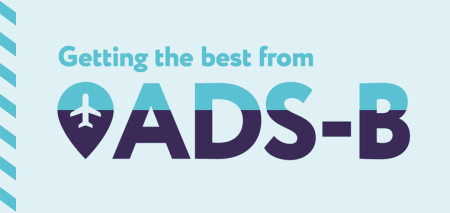By Tom Gormley, Technical Advisor with the CAA’s former ADS-B grant scheme.
To make the most of the benefits you’ve paid for, you have to switch ADS-B on at the right time – and keep it on.

65% of all registered aircraft in the country are now equipped with ADS-B.
In the 18 months since ADS-B became mandatory to fly in controlled airspace, the number of aircraft equipped with the new technology has risen to more than 3150.
That’s almost 65 percent of all registered aircraft in the country. That’s a great percentage, given the number of pilots who fly only outside controlled airspace. (And incidentally, virtually 100 percent of aircraft owners known to have entered controlled airspace around the time the ADS-B grant scheme launched, are now ADSB- enabled.) It indicates how dedicated to safe flying New Zealand pilots are.
However, in the same period, the CAA has received more than 350 reports relating to the transmission of ‘non-compliant’ ADS-B data.
Such data is information transmitted by an ADS-B kit which doesn’t meet minimum standards, as set out in rule 91.257 ADS-B system performance standards and requirements.
For instance, the data it’s sending out may be dangerously confusing to other pilots. An example is the data indicating the aircraft is on the ground, when it’s actually airborne.
There’s a number of reasons why data can be non-compliant – an increasingly common one is pilots inadvertently operating their transponders incorrectly.
Transponders should be turned on and switched to the correct mode following start-up but before the aircraft moves. Check the transponder’s operating manual or see your avionics engineer if you’re unsure which mode to use.
Transponders shouldn’t be turned on as you start your take-off roll, in flight, or as you approach controlled airspace. That’s because the system needs time to kick into action and acquire a GPS fix. Switching the transponder on, turning it off and on, or changing the mode in flight can cause real issues for the system. This is particularly the case if you’re flying a different aircraft from the one you usually fly. The ADS-B transponder may look the same as what you’re used to, but they can operate slightly differently in different aircraft.
Transmitting non-compliant ADS-B data actually breaches civil aviation rules because air traffic control has to have accurate data for separation. And outside controlled airspace, it significantly reduces the benefits to situational awareness that ADS-B is all about.
So make sure your ADS-B system is switched on and in the correct mode before you move, if you’re going to transmit ADS-B data at any point during your flight.
Now read
Is your ADS-B switched on? - An enjoyable flight on a clear day becomes a terrifying near miss. An account from one of our readers.
